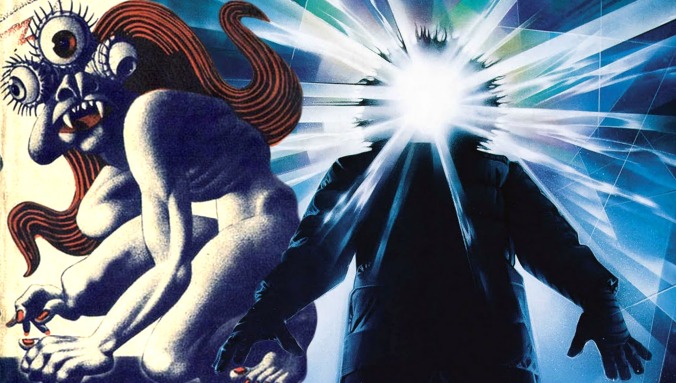The Thing shows how non-metaphoric monster movies come down to craft

Not all great horror stories are “about” something, in the sense that their monster (or monster equivalent) functions as a metaphor for a non-supernatural fear. But this is a quality a lot of consensus masterpieces share. The horror genre is uniquely suited to commentary and social criticism, and the stories lacking such subtext have to get by on craft alone. If a horror writer or director does both—a story that’s not only told well, but which taps into a deeper anxiety—it’s satisfying in a balanced-meal sort of way, while just having a good idea (but executing it badly) or just having good craft (in service of a shallow story) can mean a struggle to transcend junk-food territory.
Craft for its own sake is really the best way to describe all three versions of Who Goes There?, the highly influential story about a shape-shifting alien found in the ice of Antarctica who stalks the members of a scientific expedition. John W. Campbell’s original novella is a pure monster story and so are its two primary film versions: 1951’s The Thing From Another World, directed by Christian Nyby, and John Carpenter’s The Thing, released in 1982. However, each are a pretty representative example of sci-fi storytelling craftsmanship from their respective eras: the pulpiness of genre writing when it was still a niche interest (the novella was first published in Astounding Science Fiction in 1938), the effective-but-corny efficiency of the Golden Age studio era, and the enjoyable excess of 1980’s blockbusters. The question of which version is best comes down to which of the three styles is most to your taste, as the story itself doesn’t give you a lot to hold onto.
This is probably why Campbell’s novella, while considered a landmark of the genre, doesn’t show up on more general syllabi the way Shelley or Stoker do. Frankenstein isn’t just about a reanimated corpse, but about hubris, and the danger of humans playing God. Dracula’s not just about a vampire, but about the very human desire to give into dangerous, sinful urges.
Who Goes There? could be read as a parable about trust, but that feels like a stretch. Really, it’s just about a shape-shifting alien, but give Campbell credit: that’s an awesome idea. His novella is the modern birthplace of what can be dubbed the “are you infected?” genre, from which you can draw an easy line to a lot of modern vampire and zombie stories—basically anything where people are secretly “turned” but still look the same. (Other descendants: Michael Crichton’s Sphere is an explicit rip-off of the general premise and story.) The idea that your friend isn’t actually your friend is incredibly potent, although Campbell doesn’t exploit this for deeper resonance, and neither do Nyby nor Carpenter. Some 18 years after Who Goes There? was published, Invasion Of The Body Snatchers would deploy a similar idea to vastly more sophisticated ends, synthesizing its pod-people paranoia so well that people continue to debate whether it is more accurately read as being about Communism or a warning against anti-Communist hysteria.
Campbell had no such underlying agenda; he simply wanted to spin a good yarn, just as Nyby did, and just as Carpenter did, although Carpenter had the additional goal of showcasing the latest in Hollywood makeup, effects, and gore. (Coincidentally, The Thing was released the same day as Blade Runner, another film where the hero is tasked with determining who is and isn’t human. That The Thing’s test involves blood while Blade Runner’s concerns memory shows how that film more deeply probes the idea suggested by Campbell.)
Each adaptation has a major change from the book, but it’s curious how neither feels like they matter too much since there’s no underlying theme violated or misinterpreted by the change. Certainly the core is recognizable in all three: the icy setting (North Pole in the first movie, Antarctica otherwise), the stalking predator, no-nonsense men doing a job together. The Thing has Kurt Russell’s icy cool presence leading his crew, while the team in From Another World fits neatly into the Howard Hawks tradition of professionalism (Hawks produced the film, and is rumored to have directed much of it). Dialogue in the book, meanwhile, is so hard-boiled it shatters: If the creature gets loose, the leader muses, “it is his avowed intention to kill each and all of us as quickly as possible, which is something we don’t agree with.”
In other words this isn’t a case like The Shining, where the book is saying one thing and the film says something else.
Who Goes There? kicks off en media res, with the scientists who discovered the ETcicle having brought the supposed corpse back to their base and debating whether to risk an autopsy. From Another World rewinds a little, so that we see the team find and then trace the outline of the crashed craft. There’s a great moment when the camera cuts to an angle that allows us to see the dimensions of the mysterious ruin, and we realize it’s a flying saucer—the film’s best example of where it’s old-school craft shows its effectiveness.
